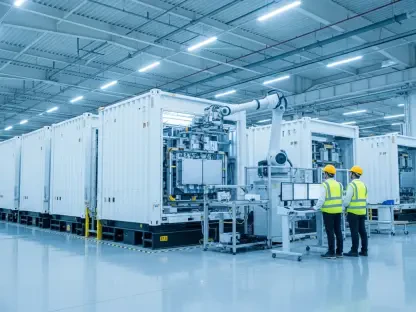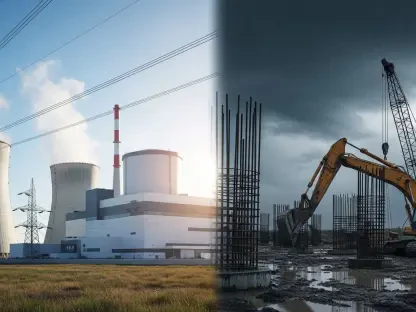Reducing greenhouse gas emissions is becoming increasingly essential for businesses to meet environmental, social, and governance (ESG) goals, attract sustainably-minded consumers, and comply with expanding regulations. By focusing on the measurement and reduction of carbon emissions, companies can considerably reduce their environmental impact and contribute to global efforts against climate change. Greenhouse gas emissions are generally divided into three scopes: Scope 1, which includes direct emissions from owned or controlled sources; Scope 2, which covers indirect emissions from the consumption of purchased electricity, steam, heating, and cooling; and Scope 3, which encompasses other indirect emissions related to business operations, such as business travel and waste generation.
Measuring and Managing Carbon Emissions
Accurately measuring carbon emissions is a critical first step for any company looking to reduce its carbon footprint. Several tools and techniques can help businesses gauge their emissions comprehensively. One of the most widely recognized frameworks is the Greenhouse Gas (GHG) Protocol, which supplies international standards for measuring and managing greenhouse gases. Businesses can also use carbon footprint calculators, which provide estimates and insights by analyzing varied aspects of the company’s operations. By using these tools, a business establishes a baseline, demonstrating where improvements are needed most.
Another effective method is conducting a Life Cycle Assessment (LCA), which evaluates the environmental impacts associated with all stages of a product’s life cycle, from raw material extraction through production, use, and disposal. An Environmental Management System (EMS) is also invaluable as it helps a company monitor, manage, and report on its environmental performance. With stringent monitoring systems and factual data, businesses can devise comprehensive strategies for carbon emission reductions, thereby aligning their operations with broader ESG objectives.
Enhancing Energy Efficiency
One of the most impactful methods to manage carbon emissions is through energy efficiency measures. By conducting energy audits, businesses can identify areas where energy consumption can be minimized. Practical steps can be taken, such as switching to energy-efficient LED bulbs, optimizing heating and cooling systems, and insulating pipes to reduce heat loss. According to the International Energy Agency, energy efficiency could account for over 40% of the necessary reduction in emissions by 2040, showcasing its immense potential.
Additionally, using smart building technologies can significantly enhance energy efficiency. These systems optimize energy usage dynamically, ensuring minimum wastage. Simple actions like turning off equipment when not in use, upgrading to energy-efficient machines, and maintaining equipment regularly can also generate substantial savings. In factories, automating processes and integrating energy management software can lead to more streamlined and efficient operations. Such changes, while seemingly small, collectively contribute to significant reductions in energy consumption and carbon emissions.
Transitioning to Renewable Energy Sources
Transitioning to renewable energy sources is a formidable yet essential step toward reducing carbon footprints in business operations. Solar panels, wind turbines, and geothermal systems are among the renewable energy solutions that can supply clean, sustainable power. These systems not only reduce reliance on fossil fuels but also generate economic savings in the long term by lowering energy costs. Many governments offer incentives for businesses that adopt renewable energy technologies, making this transition more financially viable.
Further, companies can participate in green power purchasing agreements, thereby acquiring renewable energy from certified sources. For businesses unable to install renewable technologies on-site, this provides an alternative means to reduce their carbon footprint. Partnering with energy service companies (ESCOs) can also facilitate this transition by providing expert advice on integrating renewable energy systems and even offering performance guarantees. By committing to renewable energy, businesses send a powerful message to stakeholders about their dedication to sustainability.
Optimizing Transportation and Supply Chains
Transportation-related emissions often make up a significant portion of a company’s carbon footprint. Encouraging remote work can drastically reduce the necessity of commuting, thereby cutting down on transportation emissions. When physical travel is unavoidable, promoting public transportation, carpooling, or the use of electric vehicles can make a considerable difference. Implementing company policies that limit business flights and promote virtual meetings is another impactful approach.
Optimizing supply chains is equally critical in reducing emissions. Businesses need to ensure their suppliers follow sustainable practices, which might include requiring them to use renewable energy or adopt energy-efficient technologies. Sustainable logistics can be achieved by improving the efficiency of transportation routes and methods, thereby minimizing fuel consumption and emissions. Some companies have started using eco-friendly packaging and shipping materials, which also reduces their overall environmental footprint. Sustainable supply chain management not only conserves resources but also aligns a business with increasingly prevalent sustainability standards.
Utilizing Carbon Offsetting Mechanisms
For the emissions that are hard to eliminate, carbon offsetting provides businesses with a way to compensate for their environmental impact by investing in projects that reduce or remove carbon from the atmosphere. These projects include reforestation, where trees are planted to absorb carbon dioxide, and soil carbon sequestration, which enhances soil’s ability to capture and store carbon. Advanced technologies like direct air capture, which extracts carbon dioxide directly from the atmosphere, are increasingly being utilized.
Additionally, purchasing carbon credits from verified providers is a straightforward offsetting strategy. Each carbon credit represents the reduction or removal of one metric ton of carbon dioxide equivalent. By buying these credits, companies support innovative carbon-reduction methods and projects. While offsetting alone is not a solution, it complements other reduction strategies and helps achieve net-zero or even carbon-negative status, as demonstrated by leading companies like Microsoft. This balanced approach ensures that businesses can manage their residual emissions effectively while continuing to work on minimizing them proactively.
A Comprehensive Sustainability Roadmap
Reducing greenhouse gas emissions has become increasingly crucial for businesses aiming to meet their environmental, social, and governance (ESG) objectives, attract eco-conscious consumers, and adhere to growing regulations. Companies focusing on measuring and reducing their carbon emissions can significantly lower their environmental footprint and support global initiatives against climate change. Typically, greenhouse gas emissions are categorized into three scopes. Scope 1 includes direct emissions from sources that a company owns or controls. Scope 2 encompasses indirect emissions from the use of purchased electricity, steam, heating, and cooling. Lastly, Scope 3 involves other indirect emissions associated with business activities, such as business travel and waste production. By understanding and addressing these three scopes, businesses can strategically target areas for improvement and implement more sustainable practices, thereby playing a vital role in the broader effort to mitigate climate change.









